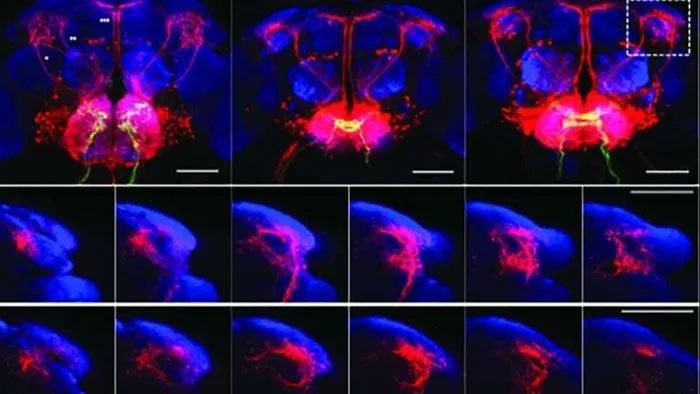The sense of taste is as important to fruit flies as it is to humans. Similar to humans, flies tend to seek out and consume sweet-tasting food.
They also reject food that tastes bitter. However, few people are aware of how sweetness and bitterness are represented by neural circuits that link sensations to behavior.

Results may indicate why flies know to avoid spoiled, toxic food.
In a new study published in the journal Current Biology, scientists at Brown University in the United States described how they developed a new imaging technique. They then used this technique to map the neural activity of fruit flies in response to sweet and bitter tastes.
Study author Nathaniel Snell stated: “These results show that the way flies’ brains encode food flavors is more complex than we predicted.” The research involved Gilad Barnea, a professor of neuroscience at Brown University’s Warren Alpert Medical School and the director of the Center for Cellular and Circuit Neuroscience at the Carney Institute for Brain Science.
The research team further investigated the brain processes that govern the flies’ responses to taste. They developed a new imaging technique called “trans-Tango” (active).
This is an adaptation of trans-Tango, a versatile technology invented by Barnea’s lab used to track neural circuits in the brain. It elevates understanding to a new level by revealing how specific neurons in the circuit respond to stimuli.
Researcher Barnea explained that the brain’s response to stimuli is similar to a relay “stick” passed from one neuron to the next, and then to another neuron, and so on…
“Trans-Tango” (active) allows us to selectively examine secondary neurons in the circuit. Therefore, we can focus on how flies respond to sweet and bitter tastes,” scientist Barnea said.
Some results may suggest why flies know to avoid spoiled, toxic food. According to the research team, secondary neurons respond to bitter tastes even after they have been removed.
“For example, understanding what drives olfactory behaviors in mosquitoes is crucial for learning how to mitigate their impact on humans. Our study may add a small piece to that larger puzzle,” researcher Barnea shared.


















































